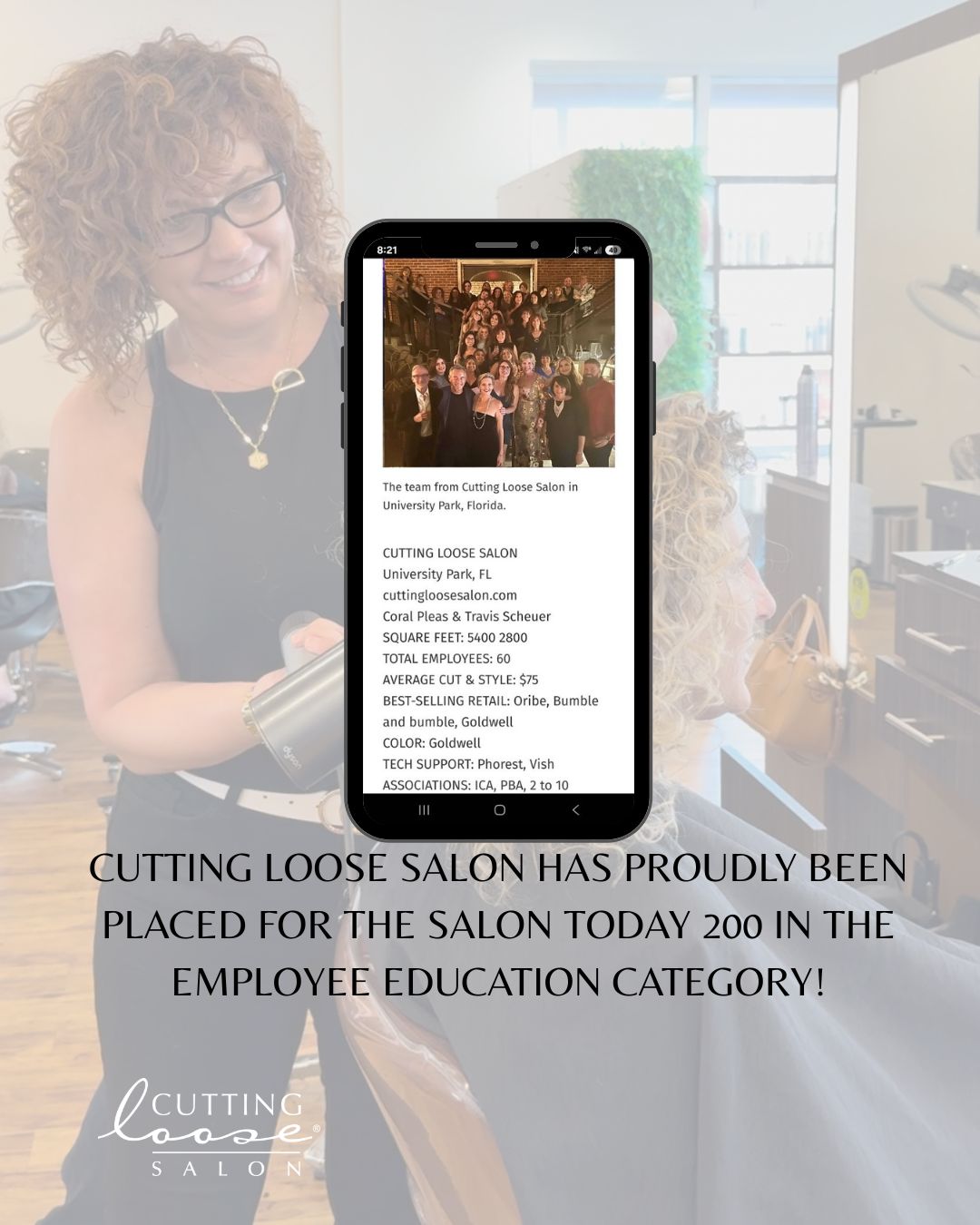Coral Pleas, veteran stylist, and owner of Cutting Loose salons shares her top tips.
This article first appeared in Sarasota Magazine (Nov. 2021)
By now, you’ve likely heard that gray hair is trending. But it doesn’t happen overnight—going gray is a process. We caught up with Coral Pleas, owner of Cutting Loose Salon, to learn what you need to know before transitioning your dyed hair to gray, and how to do it gracefully while you’re at it.

What brought on the trend in gray hair color?
“If there was ever a time to go gray, the pandemic was the perfect chance. Weddings were postponed, working in an office setting was out and parties were cancelled. So it was the right time to give it a try.”
Some people worry that going gray will age them more quickly. What are your thoughts?
“Most of these silver-haired beauties look strong, powerful, and sexy. Going gray can be flattering on some and, unfortunately, look aging on others.
“If most of your gray hair is white, chances are it will look great, because white hair tends to pop with the warmth of your skin tone. However, if the majority of your hair is dark gray, known as the salt-and-pepper tone, it is a completely different situation. It leans toward an aging look. If that’s the case, ask your stylist to add more light-reflecting and flattering grays.”
How does one go about transitioning to gray?
“The first option is to go for the ‘big chop.’ If you’re looking for the quickest way to grow your grays out, cut your hair short. There are so many cute and trending pixie cuts to choose from.
“The second option is transitional hair color. The application that we find to be the most successful is applying head full of ‘baby” highlights.’ Then, toward the end of the process, we apply a dark brown color to the remaining hair to create an all-over salt-and-pepper effect. For the best results, stylists will request at least two inches of new growth.
“Silver-gray hair looks best on olive and fair skin with yellow undertones. If you have a pink tone, then your skin may appear read and irritated with a cool gray hue. In that case, it’s better to go for a peachy color such as rose gold.”
When do we know when to stop the transition? Or is it ongoing process?
“This is determined by the length and condition of your hair. Your stylist may recommend going in for more frequent toner or gloss applications during your transition. This will help keep brassiness at bay.”
Any product recommendations?
“There are many purple shampoos that will also keep the brassiness away. For instance, Oribe recently added a selection of Silverati shampoos and illuminating pomade that will add an iridescent glow to gray hair.
What advice do you have for those who want to grow out their grays naturally?
“It may be the cheapest solution but also not be most stylish. To let your gray hair grow out naturally can take anywhere from six months to a year. It takes a lot of patience, but cutting the old, colored hair frequently will help the process.”












